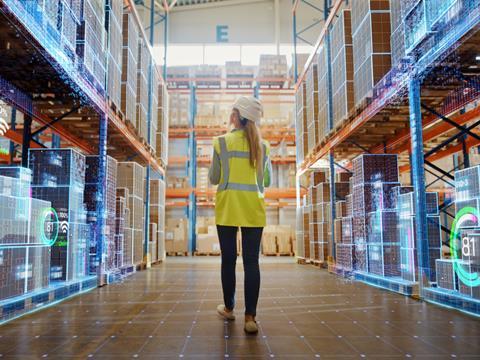
A recent survey conducted by the Brazilian National Confederation of Industry (CNI), which is made up of over 1,000 companies, revealed that the Brazilian manufacturing industry is more digital than five years ago. If in 2016, less than half (48%) of the companies surveyed used digital technologies, in 2021 this percentage had risen to 69%, according to a recent article by Liliam Benzi.
However, the bottleneck still lies in the small variety of technologies employed, which indicates that the digitalization process is still in its early stages. So much so that the survey revealed that 26% of respondents use one to three of the 18 technologies listed, and only 7% have adopted 10 or more of them. For 37% of the companies, the lack of qualified professionals is an external barrier to the adoption of digital technologies.
And the question arises: how to make the transition from a reactive to a proactive environment, especially as in the case of packaging industries, a B2B business? Although much is said about the Industry 4.0 journey, few seem to be clear on where to start. One thing is certain, the digitalization of processes is inevitable, just as the digitalization of packaging itself is inevitable. The consumer is digital and will not go back. Therefore, it will be up to the industry to adapt to this demand.
Recently, Videojet, the multinational marking and coding company, offered an important food client in Chile an exclusive morning of content that addressed just that: the connectivity of packaging in order to make it active and intelligent.
According to the specialist in augmented reality (AR) and interactive, connected packaging, Henry Assef, not only industries, but also brands need technology to draw people’s attention to the PDVs and to transmit information. And this retention of information is 70% greater with the use of technologies that ‘talk’ to the consumer.
Additionally, these technologies allow brand owners to monitor consumer habits, correct possible problems, deliver solutions in less time and, mainly, predict new consumption habits. It is technology transforming packaging into an active experience for and with the consumer.
But back to the manufacturing universe: How do we begin the digital journey? Perhaps the first step is by detecting problems. According to experts, using Artificial Intelligence (AI) for this purpose is relatively simple. The system captures data, either via sensors or images, and can visualize the performance of the assets.
Once trust is established with the system, it becomes easier to use machine learning and AI technology to keep the assets running smoothly on the shop floor and to think of new digital applications. In other words, the process is one of continuous evolution.
What is important in this process is that companies must be aware of their issues and keep their eyes open – and be culturally prepared – for the digital journey. Not incorporating digital technology into processes and packaging is no longer an option.
Everything needs to be monitored, especially at a time when the packaging industry is no longer driven by macro-trends, but by micro-trends. These are increasingly distributed and diverse movements that depend on technology to be transformed into connected processes, products, and packaging that make sense for the market, for society and for the environment.
Liliam Benzi is a distinguished packaging journalist from Latin America and currently serves as the press & communications officer for the World Packaging Organisation, WPO. Also, she is a past President of the International Packaging Press Organisation, IPPO. This article first appeared in The Internet of Packaging Journal (IoP Journal), in Brazil, with whose kind permission it is published here.











No comments yet